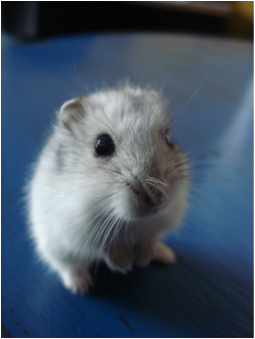 Even though I'm cute, don’t be like me! (Photo by Sandra Donoso, https://flic.kr/p/5so3Fg) Even though I'm cute, don’t be like me! (Photo by Sandra Donoso, https://flic.kr/p/5so3Fg) Thanks to a text autocorrect fail, a colleague of mine affectionately calls me “Hamsta.” I hate this nickname, because it’s too close to hamster, a creature with three highly undesirable habits: 1. running endlessly on treadmills, burning energy and getting nowhere 2. constantly seeking food, and when not eating, believing it’s starving 3. scanning for threats every waking moment, making it a nervous wreck They have a fourth undesirable habit that cannot be described in words, but must be seen (click here). Hamsters have evolved these traits to stay alive, but humans do not require such behaviors for survival, and if we mimic hamsters, we lose. We need anti-hamster qualities to thrive. Step Off That Treadmill
Energy management involves a straightforward formula: increase the elements that energize you, reduce or eliminate the ones that deplete you, and channel your energy in ways that produce the greatest impact or benefit without burning you out. I ask the following questions to help transform this formula into action: When you are operating at peak energy,
When your energy is low,
Using actions like self-appraisal, evaluation of tasks, management of interpersonal relationships, and increased application of strengths, you can step off that treadmill and quickly optimize your energy level. Push Away Due to their insane metabolisms, hamsters want to eat every waking moment. In human terms, once you stop burning energy and start managing it, then constant “eating”—the endless pursuit of new tasks, achievement, approval, or comfort —is no longer necessary. At the point people report they are sustaining energy, I ask:
Reflecting on “eating,” and how it impacts the balance of energy and mood, can help you know when you are doing—and being—enough. The Sky Is Not Falling How many situations do you encounter that can honestly be considered life and death? Perhaps I’m lucky, because in the past year, I can only identify three: a large dog chasing (and eventually biting) me, a driver swerving into my lane at high speed, and exiting the subway at night in a high crime area. During those moments, my body was appropriately pumped with adrenaline, ready to flee, evade, or fight, which helped me in two of the three circumstances (note to self: always carry dog treats, everywhere, no exceptions). What happens when our survival isn’t threatened, but we still perceive the situation as life and death? That’s right—we instantly turn into hamsters! For hamsters, every moment is potentially life threatening, because so many animals and birds consider them a lunch special. For humans, running late, arguing with a spouse, making a mistake at work, failing to complete a task on time, or even losing a job may feel like an imminent threat to existence, but they’re not, and they certainly don’t require hamster-level vigilance. To help differentiate stressful from life threatening, I ask:
Every time we distinguish a concerning situation from a life-threatening one, we avoid the health consequences of stress hormone overdose, save energy, learn to see the world more accurately, and put ourselves far above hamsters on the evolutionary scale—where we belong.
0 Comments
Leave a Reply. |
The Solutions Mine BlogAll articles written by Jason Sackett, PCC, LCSW, CEAP. Archives
July 2021
Categories |
Services |
Call310.251.2885
|
